Last Chance to Catch NYC's Holiday Notalgia Train
We met the voices of the NYC subway on our nostalgia ride this weekend!

During Urban Design Week, I was lucky enough to attend a walking tour of the Bowery led by Eric Ferrara, executive director of the Lower East Side History Project. The Bowery, stretching from Cooper Square to Chatham Square, is one of Manhattan’s oldest thoroughfares, and one of the Historic Districts Council’s “Six to Celebrate” neighborhoods for 2011. In recent years, the mix of historic structures along the street has been threatened by high-rise development.
The Bowery has a rich and interesting history. Originally a modest Native American footpath named Wickquasgek Trail that ran from the tip of Manhattan up through the Bronx and Westchester region. By 1626, the Dutch West India Trading Company settled on the island and cultivated several plantations called bouwerijs. Wickquasgek Trail was widened and became known as Bouweij Road. No matter the name, it would remain the only major road in and out of the city for the next century and a half. In August 1664, the British landed and Governor Stuyvesant handed over control of the island. Under the British, Manhattan grew rapidly with the Bowery at the heart of it all.
Chatham Square
From a native lookout to a Dutch picnic ground to a freed slave cattle farm, then starting in 1673 the postal riders started their journey up to Boston from Chatham Square along Boston Post Road, or “King’s Highway.” In 1729 Nicolas Bayard II, established a slaughterhouse on his property west of the Bowery. Farmers from as far away as Ohio transported entire herds to trade and sell on the Bowery’s bull market.
Once the Revolutionary War started, Manhattan was fortified by General George Washington and his army. Stuyvesant and Bayard gave up their estates for the effort, British loyalists who fled like James DeLancey gave up their land when they returned to England. Once the war was won, George Washington held his first inaugural ball at DeLancey’s old house in 1789,
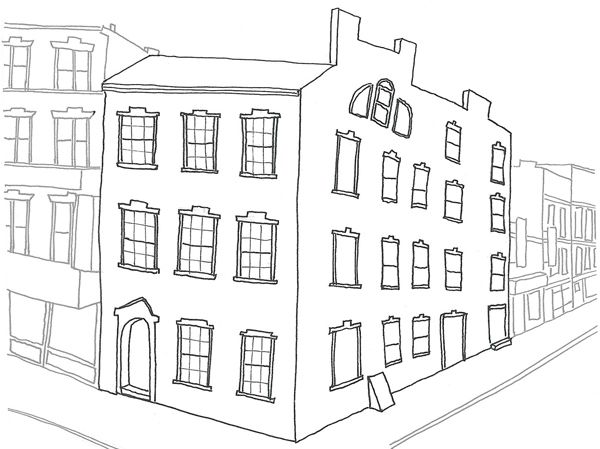
18 Bowery – The Edward Mooney House (above)
Edward Mooney bought DeLancey’s land, and built the two story house that is now 18 Bowery. A later a third story was added, and a few alterations were made over the years until it was restored in 1971.
Chatham Square grew into an upscale neighborhood after the cattle farm moved north to Twenty Fourth Street. With residents like the Astor family, the Bowery became quiet affluent and it became the most fashionable address in America.
Irish and German immigrants settled in the Bowery and Chatham Square soon became a rough and rugged area. The professional establishments were replaced by saloons and other low brow entertainment. Gangs like the Irish Dead Rabbits and Nativist Bowery Boys became formed alliances with the police and together made sure the underground economy ran smooth. Though criminal, the area was also progressive and one step ahead of the social curve. With many gay clubs, saloons, bathhouses and theaters, it was the earliest gay district in America.
Doyers/Mott/Pell Streets
In 1858 the first Chinese Immigrants congregated and settled on Mott Street. The Chinese Exclusion Act of 1882 prevented the population from growing too fast and the Chinese residents were centered on Doyers, Mott and Pell Streets. This small neighborhood started catering “exotic goods” to tourists and curious shoppers. After the Chinese Exclusion Act was nullified in 1943, immigration boomed.
37-39 Bowery
This four lot building has quite the history. In 1833 it was a privately owned Zoological Institute, that housed lions, zebras, elephants and other exotic animals. It was a very elaborate building with a huge hall for the circus acts and horse shows, skylights for natural light to get in during the day and chandeliers to light the beautifully painted stalls at night. In 1835 it turned into the Bowery Amphitheater, and P.T. Barnum landed a job here as a copywriter in 1941. It stayed a string of theaters until 1897 when it became a church.
30-36 Bowery
Built on four lots along the Bowery in 1826 the grand North American Hotel soon became a hot spot for the after-dinner crowd and celebrities of the 1830s and 40s. Politicians also frequented the hotel and did their wheeling and dealing here. It was renamed the Branch Hotel in 1855. In 1857 it was the site of a major battle between the Bowery Boys and the Dead Rabbits.
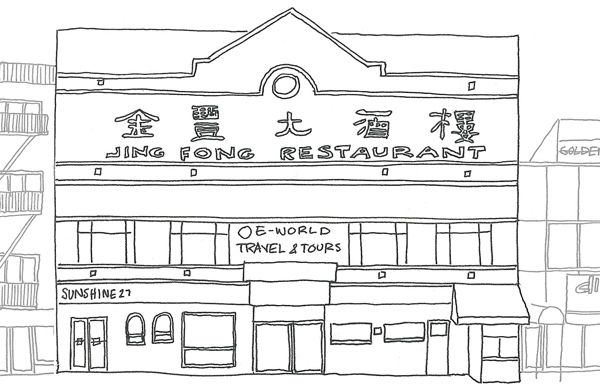
46-48 Bowery (above)
First a halfway house in the early 1700s, then a meeting point for George Washington and his generals, the building became the Bowery Theater in 1827. It was a 3,000 seat theater, which made it the largest in the country when it was first opened; it was also the first gas-lit theater. The theater wasn’t welcomed by everyone, it wasn’t the plays that were a problem, it was mainly the prostitutes that were hired to “work” the upper boxes, as well as the gambling and alcohol consumption that came along with the night out. The building sustained 8 fires and was rebuilt each time.
101 Bowery
P.T. Barnum opened his first store here in 1839, but it lasted less than a year when his partner bailed on him and left him in debt. P.T. Barnum moved on ventures elsewhere. It then became an illegal faro parlor. In 1881 it became a curiosity exhibits. These exhibits were fairly common in the late 1800s featuring sideshow acts and anatomical exhibits..
103-105 Bowery
This is the site of George Bunnell’s New American Museum, which combined the curiosity exhibit with a wax museum and live theater featuring vaudeville, burlesque and minstrel skits. Later it would become home to a pair of rough saloons; the Burnt Rag had two boxing rings so contestants could duke it out for a $5 prize.
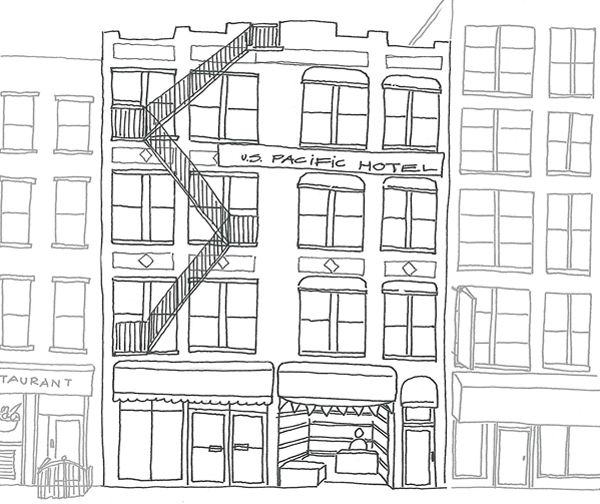
104-106 Bowery (above)
Here, in 1853, the National Theater hosted one of the earliest stage productions of Uncle Tom’s Cabin. It was a beer garden in 1875 before becoming a Romanian Opera House in 1886. It was one of of the earliest Yiddish theater playhouses in America. It was a string of theaters for over a half a century, before turning residential in the 1930s.
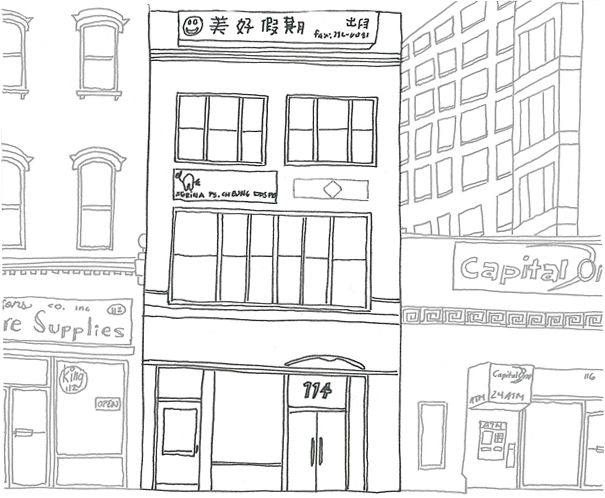
114 Bowery (above)
Ever wonder where the phrase, “pulling a Brodie” came from? Well look no further. 114 Bowery is the site of Steve Brodie’s saloon. He grew up as an outgoing newsie, but became famous in the 1880s for jumping off the Brooklyn Bridge and surviving. Most believed the jump was a hoax, but that didn’t stop vaudeville stars from performing musicals about the stunt. The stunt was so famous there is a 1933 Hollywood film The Bowery about it, and a 1949 Looney Tunes cartoon starring Bugs Bunny.
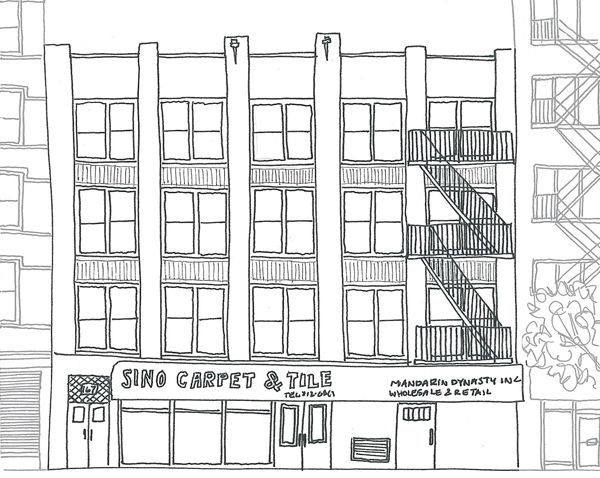
165-167 Bowery (above)
Owned by Henry Clay Miner, Miner’s Bowery Theater, played an important role in the history of American variety and vaudeville entertainment. The “hook” was invented here to retrieve a less than stellar performer off the stage one night.
199 Bowery
Tony Pastor’s Opera House was located here. With no spitting, throwing, smoking obscenity, rowdy behavior or alcohol allowed, Tony Pastor made the Opera family friendly. Once the theater moved, Henry Miner opened Miner’s People Theater. It was the first theater in New York to be lit by electric light. Miner even had an “isolated electric plant” installed in the building.
207 Bowery
From 1859 to 1862 this was a Free and Accepted Mason Lodge, where P.T. Barnum was a member. It held offices and classrooms until the late 1880s when Henry Miner bought the property. Later “Big” Tim Sullivan set up his headquarters here. Sullivan was notoriously corrupt, and handed out free food, shoes and bail money in exchange for votes and worked with gangsters who assisted in voter fraud.
By 1900 the Lower East Side was one of the most densely populated two square miles in the world. Once the Williamsburg and Manhattan bridges opened, most of the over crowding was alleviated. Once the Times Square of its day, the Golden Age of the Bowery was fading. By 1930 most of the theaters and museums were replaced with warehouses and manufacturers, it was one of the poorest neighborhoods in the world it was a haven for the homeless and was dubbed Skid Row. After WWII, things changed again, artists and musicians moved in and a resurgence of arts and culture emerged again.
Unfortunately this was the end of the walking tour. There was so much more of the Bowery to learn about, I feel we barely grazed the surface after two hours. I highly recommend this tour to anyone that has a chance. If you can’t make it you can check out Eric Ferarra’s book The Bowery: A History of Grit, Graft and Grandeur.


If you are interested in joining the Historic Districts Council you can join online at www.hdc.org.
To nominate your NYC neighborhood to be a celebrated for it’s history in 2012 you can fill out a form located on the Historic District Council’s website.
Subscribe to our newsletter